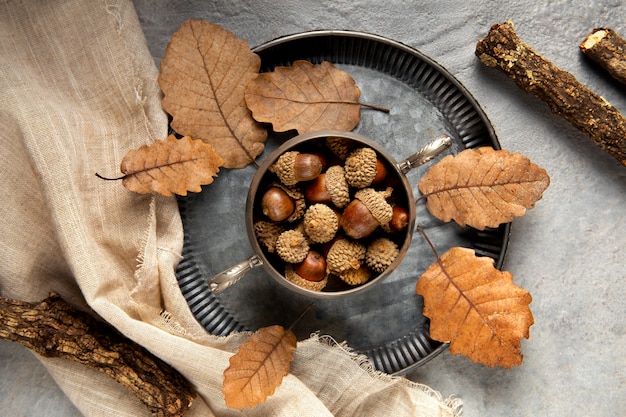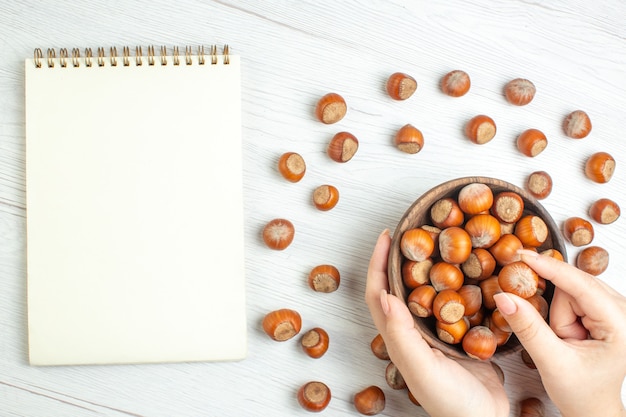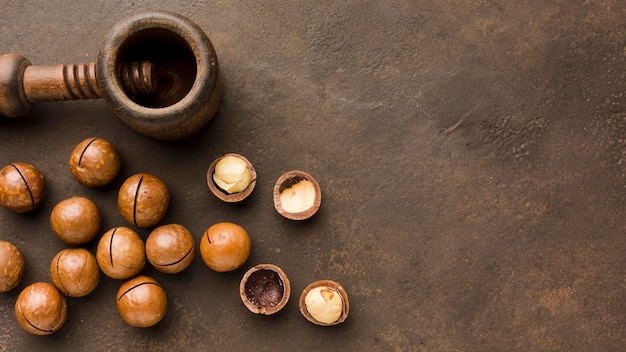Ah, chestnuts! Just the mention of these delightful, earthy nuts evokes images of cosy evenings by the fire, the comforting aroma of autumn filling the air. I've always loved chestnuts, right from childhood, when I'd sit around the fire pit with my family, mesmerized by the embers licking at the chestnut shells. The anticipation, the scent, and then the magic of cracking open the shell to reveal the soft, buttery chestnut inside - pure bliss!
But chestnuts aren't just for nostalgic memories and fireside treats. They're remarkably versatile, making their way into everything from hearty stews to decadent desserts. Over the years, I've learned quite a bit about cooking these little gems, and I'm eager to share my knowledge with you. So, grab a warm mug of your favourite beverage, settle in, and let's embark on a delicious journey together!
(Part 1) Choosing the Perfect Chestnuts

The first step in any chestnut culinary adventure is choosing the right ones. You wouldn't want to waste time and effort on subpar chestnuts, would you? Here's what to keep in mind when you're browsing the market:
Freshness is Key
Always go for chestnuts that are firm and plump, with a shiny, unblemished skin. Avoid any that are wrinkled, soft, or have dark patches. I always give them a gentle squeeze to ensure they're not overly squishy.
Size Matters
In the world of chestnuts, bigger isn't always better. Smaller chestnuts tend to have a more delicate flavour and are easier to peel. However, if you're looking for that classic chestnut flavour in a hearty dish, larger chestnuts might be your best bet.
Storage is Crucial
Once you've got your perfect chestnuts, it's essential to store them correctly to preserve their freshness. The ideal place is a cool, dry, well-ventilated area, ideally in a paper bag. Avoid storing them in airtight containers or plastic bags as they can become mouldy.
Don't Forget to Check for Pests
While rare, sometimes chestnuts can harbour little critters like weevils. Before storing, take a moment to examine them carefully and discard any that show signs of infestation.
(Part 2) Preparing Chestnuts for Cooking

So, you've got your perfect chestnuts. Now it's time to prepare them for cooking. This step is crucial because it helps to prevent them from exploding in the pan - a truly messy situation, let me tell you!
The Scoring Technique
Most recipes call for scoring the chestnuts before cooking. This is done by making an "X" shape on the flat side of the chestnut with a sharp knife. This allows steam to escape during cooking, preventing them from bursting. Be extremely careful when scoring! I've had my fair share of little cuts, not from the chestnuts themselves, but from the knife slipping.
Soaking for Softer Results
For certain dishes, like chestnut purée, soaking the chestnuts beforehand can be beneficial. This helps to soften them and makes them easier to peel. I usually soak them in cold water for about 30 minutes, but you can soak them for longer if you prefer.
Boiling for Easy Peeling
If you're planning to use the chestnuts whole, boiling them for a few minutes before roasting can be a game-changer. This helps to soften them and makes them easier to peel. I've found that boiling them for 10 minutes is usually sufficient.
(Part 3) roasting chestnuts for Pure Indulgence

Ah, roasted chestnuts. There's nothing quite like the comforting aroma and the satisfying crunch of a freshly roasted chestnut.
The oven method
This is the most common way to roast chestnuts. Simply spread them in a single layer on a baking sheet lined with parchment paper. Roast at 400°F (200°C) for 20-25 minutes, or until the skins are starting to crack open and the chestnuts are tender.
As you roast, you'll notice a little bit of sap being released. This is completely normal and adds a lovely caramelized flavour to the chestnuts. Just be sure to keep an eye on them so they don't burn.
The Pan Method
For a more rustic approach, you can roast chestnuts in a heavy-bottomed pan over medium heat. Add a little water to the pan to help create steam and prevent the chestnuts from burning. Cook for about 15-20 minutes, shaking the pan occasionally, until the skins are cracked and the chestnuts are tender.
The Fire Pit Method
If you're lucky enough to have a fire pit, this is a truly magical way to roast chestnuts. Simply wrap them in foil, then bury them in the hot embers. Cook for about 15-20 minutes, or until the skins are charred and the chestnuts are tender.
(Part 4) Boiling Chestnuts for Versatility
While roasting is a fantastic way to enjoy chestnuts, boiling them opens up a world of possibilities for soups, stews, and other dishes.
Simple Boiling
Bring a pot of water to a boil, then add the scored chestnuts. Reduce heat to a simmer and cook for 20-30 minutes, or until the chestnuts are tender.
After boiling, drain the chestnuts and rinse them with cold water. This helps to cool them down and makes them easier to peel.
Boiling with Aromatic Herbs
For a more flavourful approach, add a few bay leaves, cloves, or other aromatic herbs to the boiling water. This infuses the chestnuts with a delicious fragrance.
(Part 5) Other Creative Ways to Cook Chestnuts
Beyond roasting and boiling, there are other creative ways to cook chestnuts that can elevate your culinary game.
Pan-Frying for Crispy Goodness
Pan-frying chestnuts in a little butter or oil gives them a lovely crispy exterior and enhances their natural sweetness. Simply heat the butter or oil over medium heat in a pan, then add the scored chestnuts. Cook for 5-7 minutes, stirring occasionally, until golden brown and crispy.
Chestnut Purée for Smoothies and Desserts
Chestnut purée is a versatile ingredient that can be used in smoothies, desserts, and sauces. To make it, simply boil the chestnuts until tender, then peel and purée them in a blender or food processor. You can add a little milk, cream, or honey to sweeten the purée if you like.
chestnut flour for Gluten-Free Delights
Chestnut flour is a fantastic gluten-free alternative to wheat flour. It has a slightly sweet flavour and can be used in cakes, cookies, pancakes, and more. You can make your own chestnut flour by grinding roasted chestnuts in a food processor or blender.
(Part 6) Peeling Chestnuts – The Art of Patience
Peeling chestnuts can be a bit of a chore, but with a few tricks up your sleeve, it can be less of a hassle.
The Patience Factor
First things first, patience is key. You're going to need a steady hand and a little bit of time. Remember, these little guys are delicate and can easily crumble if you try to force them open.
The Hot Water Method
After roasting or boiling, I find that plunging the chestnuts into a bowl of hot water for a minute or two helps loosen the skins. This makes them easier to peel, and the water also softens the chestnuts, making them more palatable.
The Tool Trick
A small paring knife, a chestnut peeler, or even a fork can be helpful tools for removing the skins. Just be sure to work gently so you don't end up with a pile of chestnut fragments.
The Bite Test
Once you've peeled a few, give them a bite test. If the chestnut feels tender and the skin comes off easily, you're good to go. If the chestnut feels hard or the skin is still tightly clinging, it's back to the boiling pot or the oven for a bit longer.
(Part 7) chestnut recipes to Savor
Now that you've got a good grasp of chestnut cooking basics, it's time to get creative! Here are a few of my favourite recipes that feature these delightful nuts.
Creamy chestnut soup
This soup is rich, comforting, and perfect for a chilly autumn day. It's made with roasted chestnuts, onions, garlic, and a touch of cream. The creamy texture and the sweetness of the chestnuts make it a truly delightful dish.
chestnut stuffing
This classic stuffing is a must-have for any Thanksgiving or Christmas feast. It's made with chopped chestnuts, bread cubes, herbs, and spices. The chestnuts add a unique flavour and texture to the stuffing, making it a real crowd-pleaser.
chestnut cake
If you're looking for a decadent dessert, this cake is sure to impress. It's made with chestnut flour, butter, eggs, and sugar. The cake has a moist and dense texture, with a delicate sweetness that's perfectly balanced by the nutty flavour of the chestnuts.
chestnut and cranberry chutney
This chutney is a tangy and sweet condiment that's perfect for serving with roast turkey, chicken, or pork. It's made with chopped chestnuts, cranberries, apples, onions, and spices. The combination of sweet, tart, and savory flavours makes this chutney a unique and delicious accompaniment to any meal.
chestnut and chocolate brownies
These brownies are a decadent treat that combines the richness of chocolate with the nutty flavour of chestnuts. The chestnuts add a unique texture and depth of flavour to the brownies, making them a truly special dessert.
(Part 8) FAQs about Chestnuts
Here are some commonly asked questions about chestnuts:
1. Are chestnuts good for you?
Yes, chestnuts are packed with nutrients. They're a good source of fibre, vitamin C, and potassium. They also contain antioxidants, which can help protect your cells from damage.
2. How many chestnuts should I eat?
Chestnuts are relatively low in calories, but they are also high in carbohydrates. It's generally recommended to eat them in moderation. A handful or two is usually a good serving size.
3. What's the best way to store chestnuts?
Store chestnuts in a cool, dry, well-ventilated area, ideally in a paper bag. Avoid storing them in airtight containers or plastic bags as they can become mouldy.
4. Can you freeze chestnuts?
Yes, you can freeze chestnuts. Peel and blanch them first by boiling them for a few minutes, then plunge them into ice water to stop the cooking process. Once drained, spread them on a baking sheet to dry, and then transfer them to freezer-safe bags. They'll last for up to 6 months in the freezer.
5. Where can I buy chestnuts?
You can usually find chestnuts in the produce section of most supermarkets, especially during the autumn months. Some specialty grocery stores may carry them year-round. You can also find them at farmers markets, particularly in areas with a strong agricultural tradition.
(Part 9) Chestnut Adventures: A Journey of Flavour
From the humble fire pit to gourmet kitchens, chestnuts have captured our hearts and palates for centuries. Their versatility, their earthy sweetness, and their delightful texture make them a culinary treasure.
So, the next time you're looking for a unique ingredient to add some warmth and character to your meals, remember those delightful little chestnuts. Let your imagination run wild, and embark on a journey of flavour with these truly versatile treasures of autumn.
Happy cooking, and happy chestnut-ing!
Everyone is watching

Corn on the Cob: The Ultimate Guide to Perfectly Cooked Ears
Healthy MealsAh, corn on the cob. Just the name evokes images of sunny days, barbecues, and that sweet, juicy flavour that ...

Perfect Pork Roast Oven Cooking Time: A Guide to Delicious Results
Healthy MealsThere's something truly satisfying about a perfectly roasted pork. The aroma alone is enough to make your mout...

Ham Cooking Time: How Long to Bake, Smoke, or Boil a Delicious Ham
Healthy MealsAh, ham. It's a classic, isn't it? A real crowd-pleaser, especially around holidays. And when done right, it'...

Scallops: The Ultimate Guide to Perfect Cooking
Healthy MealsAh, scallops. Those delicate, sweet, and utterly delicious morsels of the sea. They hold a special place in my...

Spaghetti Squash: The Ultimate Guide to Cooking and Serving
Healthy MealsRemember that time you saw spaghetti squash at the supermarket, looking all bumpy and strange, and thought, "W...
